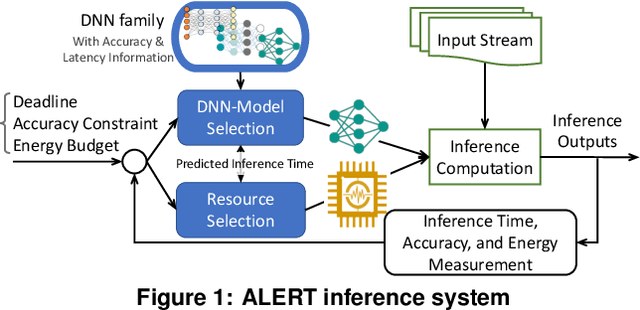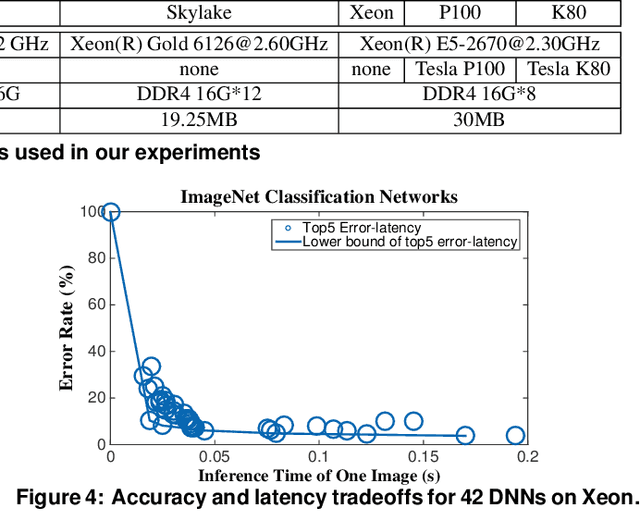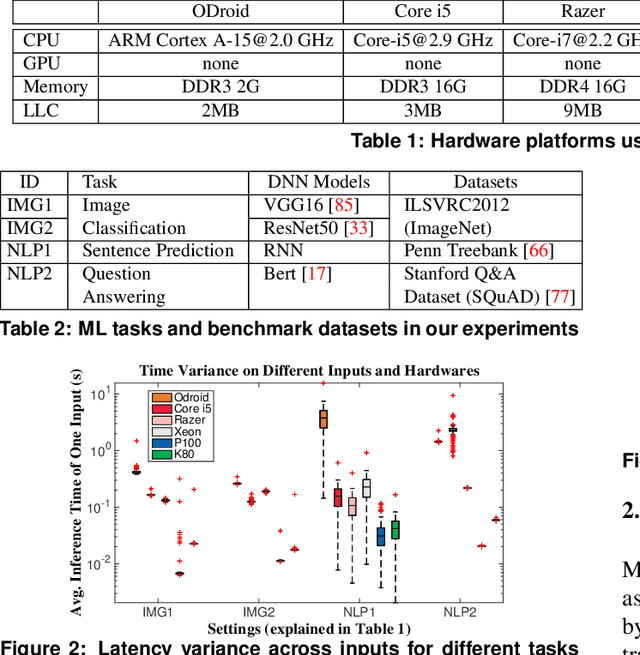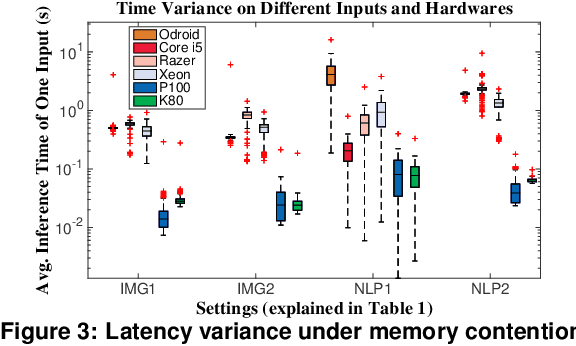ALERT: Accurate Anytime Learning for Energy and Timeliness
Paper and Code
Oct 31, 2019



An increasing number of software applications incorporate runtime Deep Neural Network (DNN) inference for its great accuracy in many problem domains. While much prior work has separately tackled the problems of improving DNN-inference accuracy and improving DNN-inference efficiency, an important problem is under-explored: disciplined methods for dynamically managing application-specific latency, accuracy, and energy tradeoffs and constraints at run time. To address this need, we propose ALERT, a co-designed combination of runtime system and DNN nesting technique. The runtime takes latency, accuracy, and energy constraints, and uses dynamic feedback to predict the best DNN-model and system power-limit setting. The DNN nesting creates a type of flexible network that efficiently delivers a series of results with increasing accuracy as time goes on. These two parts well complement each other: the runtime is aware of the tradeoffs of different DNN settings, and the nested DNNs' flexibility allows the runtime prediction to satisfy application requirements even in unpredictable, changing environments. On real systems for both image and speech, ALERT achieves close-to-optimal results. Comparing with the optimal static DNN-model and power-limit setting, which is impractical to predict, ALERT achieves a harmonic mean 33% of energy savings while satisfying accuracy constraints, and reduces image-classification error rate by 58% and sentence-prediction perplexity by 52% while satisfying energy constraints.
 Add to Chrome
Add to Chrome Add to Firefox
Add to Firefox Add to Edge
Add to Edge